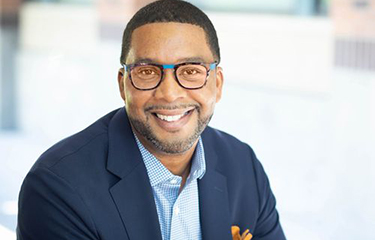Businesses across industries are approaching their diversity and inclusion (D&I) policies with heightened intentionality in 2022, according to Tony Byers, who has spent more than two decades studying the importance of such initiatives for the U.S. corporate sector.
Author of the book, “The Multiplier Effect of Inclusion: How Diversity and Inclusion Advances Innovation and Drives Growth,” and the former director of global diversity and inclusion for Starbucks, Byers believes D&I to be “the business imperative of our time.” It’s a belief he hopes to pass onto the seafood industry during his plenary address at Seafood Expo North America on 14 March, 2022.
Billions of dollars have been invested into D&I initiatives by U.S. businesses as a means to improve corporate cultures, innovation processes, and more. This dedication to D&I is intensifying as time goes on, Byers recently told SeafoodSource, with many institutions and organizations moving away from performative diversity and “becoming much more strategic and intentional about their actions.”
“What we’re seeing is more dedication towards systemic change, and I think that’s positive," he said.
These days, businesses are focusing on how to improve outcomes for D&I success by creating more room in their policies for sustainability, integration, and change, Byers noted. They’re also refining how they attract and foster talent that is unique and manifold, he said.
“The lessons of the past year are instructive to us, they’re telling us that we should be intentional, that we should look for diverse perspectives and build a better feedback process that’s going to help us enhance our performance,” Byers said. “We should think about building or developing talent from different backgrounds inside of our businesses, so that we can get different voices, different perspectives, which can lead to more ideas that are innovative and new.”
For companies just starting out on their D&I journeys, as well as those that have already made headway, Byers recommends “looking beyond the traditional approach.”
“If our approach is simply that we’ve always done things this way, that’s a good place to start,” Byers said. “It reminds me of that old cliché: ‘What got you here won’t get you there. Organizations should really start thinking about ‘What got us here, what’s next for us, and how can we get there?’ And it’s not going to be doing more of the same thing faster. It’s going to be small tweaks, innovation, and improving your processes, and when you have different approaches, different ideas, you have a quicker path to get there.”
Byers also suggests that organizations pay attention to how they’re adding members to their teams.
“We’re looking for a good cultural fit, when we really should be thinking about value add,” he said. “If you’re looking for more of the same, then you’re going to get more of the same.”
That goes for leadership especially, he said, which is why it’s important for firms to make sure inclusivity enters the C-suite, too.
“What we really want to do is practice inclusive leadership behaviors that lead to outcomes. That is the difference between supporting diversity and being an inclusive leader [or] person,” Byers said. “Change usually starts with some senior leader self-reflection, and then building an expectation that inclusive behavior is what is required to be a leader. That for some organizations is very easy, and for others, it’s very courageous.”
The healthcare industry is one that has been effectively putting these concepts into practice as of late, according to Byers.
“We should really look at healthcare – talk about a stressful job over the last two years. I’m just amazed at the number of people who are healthcare providers, who are staying engaged and leaning in despite all the things that are happening to them. Think about being a leader for a number of nurses: How do you keep them inspired, engaged, safe, and create that energy? You have to have supportive, empathetic leaders, to have great feedback systems and loops, and the ability to operate on those feedbacks and loops to ensure that all voices are heard and to make changes from that. You have to have appreciation, a willingness to gain different perspective, and the capacity to provide flexibility and the opportunity to do the job in different ways,” he said.
For the seafood professionals who attend his session in Boston on 14 March, Byers hopes to share a working knowledge of D&I as well as some ideas to ponder – and act upon – when they return to work.
“I want attendees to come away with not only understanding the benefits of diversity and inclusion, but what they can reflect on for that first day back in the office in terms of actions and behavior that they can alter to make a difference for their team,” he said.
Photo courtesy of Tony Byers







